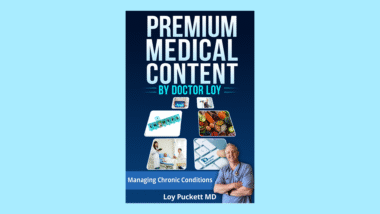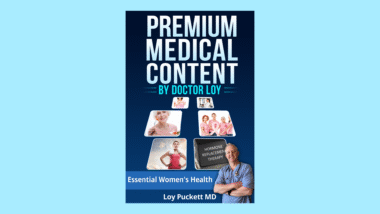Taking care of health includes comprehensive monitoring and proactive behavior that extends beyond treating illness when it arises. For women between ages 30 and 50, preventive practices provide a roadmap to wellbeing during some of life’s most demanding years. This period often includes balancing careers with family responsibilities, navigating pregnancy or perimenopause, and establishing habits that protect long-term health. Regular screenings, balanced nutrition, consistent physical activity, and informed lifestyle choices create a foundation that supports vitality and prevents disease. In what follows, we’ll discuss important screenings for this age range, nutritional needs during reproductive years and the transition to menopause, exercise approaches for midlife, and specific ways to reduce disease risk.
Health Screenings
Regular health screenings during the thirties and forties build a strong foundation for long-term wellness. Pap smears remain one of the most important tests, as they can detect cervical changes before they become more serious. Blood pressure and cholesterol monitoring offers insight into heart health and allows for lifestyle changes before patterns become problems. During the forties, mammograms become a central part of screening, as detecting breast cancer early often makes treatment more effective and less invasive. Bone density testing is also recommended around this time, especially as estrogen levels begin to decline and the risk of osteoporosis increases. Blood glucose and thyroid checks help reveal metabolic imbalances that may contribute to fatigue or weight changes. Keeping up with screenings creates a sense of partnership and trust with healthcare providers, who get to know personal health histories and can make more precise and supportive recommendations over time.
Nutrition
Nutrition plays an important function during these years, with needs shifting as women move through reproductive stages and into perimenopause. During the reproductive years, folate becomes a very important nutrient, helping reduce the risk of neural tube defects even before conception. Energy and protein needs may increase for those managing work, parenting, or active lifestyles, making it important to ensure meals are satisfying and nutrient-dense rather than relying on quick fixes. As women enter perimenopause, typically in the mid to late forties, weight management becomes more difficult due to hormonal shifts and metabolism changes. Paying closer attention to portion sizes, focusing on whole foods, and including regular movement can help. Bone health becomes a priority during this transition, as declining estrogen levels make osteoporosis more likely. Calcium, vitamin D, and weight-bearing exercise all support bone strength. Inflammation also tends to rise during perimenopause, which can influence joint comfort, sleep, and mood. Diets rich in colorful produce, omega-3 fats, and fewer processed foods can ease some of these concerns.

Exercise
Exercise is one of the most powerful tools women can use to support health during midlife. Regular movement strengthens the heart and keeps blood vessels flexible, reducing the risk of heart disease. Weight-bearing activities like walking or resistance training slow the natural decline in bone density that occurs with age. Exercise also helps with weight management and keeps metabolism steady, which becomes increasingly important during the forties. Improved muscular strength protects joints and may reduce aches associated with osteoarthritis. Beyond the body, exercise has a powerful effect on mental wellbeing by reducing stress, lowering cortisol levels, and releasing endorphins that create a natural lift in mood. Women who engage in regular activity often notice less anxiety, fewer feelings of depression, and better overall energy. A well-rounded routine typically combines strength training to build muscle and support bones, cardiovascular exercise to strengthen the heart, and flexibility practices like yoga or Pilates to keep the body agile and support stress management.
Lifestyle
Specific lifestyle choices can reduce the risk of serious conditions like breast cancer, one of the most common cancers affecting women. While some risk factors such as family history and genetics cannot be changed, others can be influenced by daily decisions. A balanced diet rich in vegetables, fruits, legumes, and whole grains provides antioxidants and nutrients that may protect cells. Limiting alcohol is particularly important, as even moderate intake has been linked to increased breast cancer risk. Regular exercise reduces inflammation and supports a healthy weight, which affects overall cancer risk. Weight management through balanced nutrition and activity can significantly reduce risk, while routine mammograms starting in the forties and self-awareness about what is normal for your own body support early detection. Women with dense breast tissue or family history may benefit from additional imaging or genetic counseling to clarify personal risk and inform next steps for surveillance.
Final Thoughts
Preventive practices during the thirties and forties represent the foundation for long-term health and vitality. From regular screenings that catch concerns early to balanced nutrition that shifts with reproductive changes, consistent exercise that supports body and mind, and informed lifestyle choices that reduce disease risk, these approaches work together to protect wellness during demanding midlife years. By understanding which practices matter most during this stage, maintaining consistency with screenings and healthy habits, and seeking guidance when needed, women can stay ahead of health concerns and feel confident in their wellbeing. Each healthy choice made during these years is an investment in lasting vitality and quality of life.
To Your Health,
Doctor Loy


Doctor Loy
Loy Puckett MD
Emergency Medicine – 28 Years Experience


